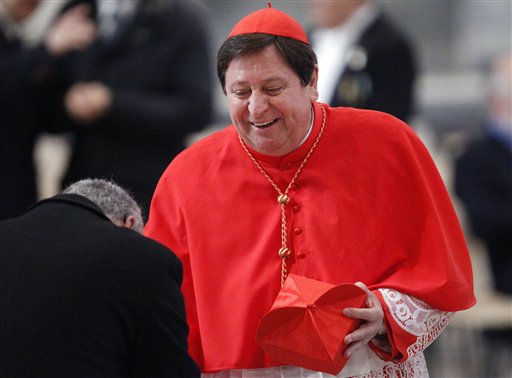By E. EDUARDO CASTILLO
Associated Press
MEXICO CITY
Latin America is home to the world’s largest Roman Catholic population, but hopes that the next pope will come from the region appear faint, experts said Monday.
The predominance of Europeans on the College of Cardinals means that the odds are stacked against a Latin American pope, even though the names of a number of high-ranking churchmen from the region have been bandied about, analysts said. The 118-member college, with 62 European members and only 19 from Latin America, will elect a successor for Pope Benedict XVI, who announced Monday he will resign due to age.
Still, hope springs eternal.
Crossing himself before leaving the church, Reyes noted, “I would be proud. We’ve had Italian, Polish, German. It’s time for a Latin American.”
Brazilian Cardinals Joao Braz de Aviz, a 65-year-old who has earned praise as head of the Vatican’s office for religious congregations, and Odilo Pedro Scherer, the 63-year-old archbishop of Sao Paulo, have been mentioned as possibilities.
Other Latin Americans posited as possible popes include Argentina’s Leonardo Sandri and Jorge Mario Bergoglio, the Archbishop of Buenos Aires. Sandri is head of the Vatican’s office for Eastern rite churches. He earned fame as the “voice” of Pope John Paul II when the pontiff lost the ability to speak because of his Parkinson’s disease.
Also mentioned in 2005, when Benedict was chosen, was Honduran Archbishop Oscar Andres Rodriguez Maradiaga.
But it is unclear whether any one of them could gain traction.
While some see Latin America’s estimated 40 percent of the world’s 1.2-billion Catholic population as a bulwark of the faith, the church is also facing challenges in the region from evangelical churches.
In Mexico, the percentage of the population who identify themselves as Catholics dropped from over 90 percent in the 1980s to 84 percent in 2010, the latest year for which data is available.
In Brazil, home to a number of charismatic or evangelical churches, the drop has been even more precipitous, from 84 percent in 1995 to 68 percent in 2010.
Still, some see Latin America’s still-large Catholic population as a decisive force.
For Rosita Mejia, 44, who has sold religious items for 25 years outside the La Merced church, the next pope’s country of origin is less important than his vigor, energy and proximity to the people, none of which were distinguishing characteristics of Benedict VXI.

COMMENTS
Please let us know if you're having issues with commenting.